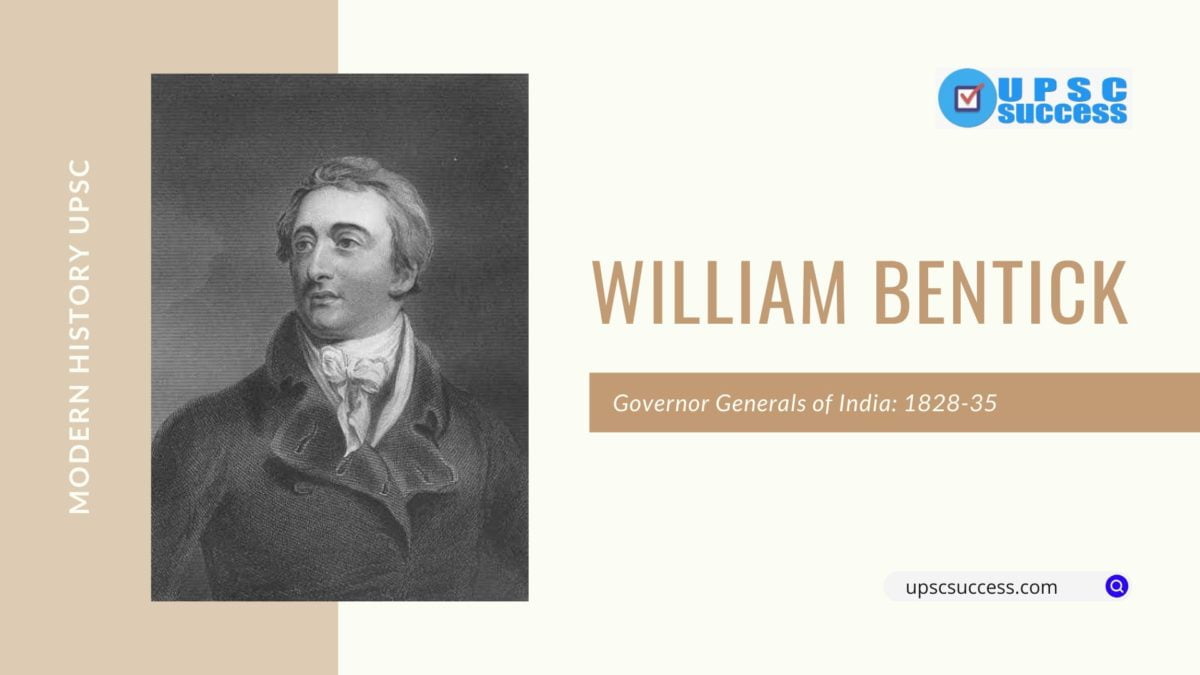| Full name: | William Henry Cavendish-Bentinck |
| Born: | 14 September 1774, Buckinghamshire, United Kingdom |
| Died: | 17 June 1839, Paris, France |
| Previous offices: | Governor-General of India (1828–1835), Governor of Madras (1803–1807) |
| Organizations founded: | Medical College Kolkata, Rajshahi Collegiate School |
Major Works of WILLIAM BENTICK
• 1st GG of India.
• Abolition of Sati & others
• Suppression of thugi (1830)
• Charter Act 1833
• Edu. Reforms and English as the official language
• Annexation of : Mysore (1831), Coorg (1834), Central Cachar (1834)
• Perpetual friendship with Ranjeet Singh.
• Abolition of provincial courts of appeal and circuit of 2.
• 1st Medical College of India.
FAQs
He served as Governor-General of India from 1828 to 1835. He has been credited for significant social and educational reforms in India, including abolishing sati, he forbade women to witness the cremations on the ghats of Varanasi and suppressing female infanticide and human sacrifice.
William Bentinck was the first Governor-General of India.
The Bengal Sati Regulation which banned the Sati practice in all jurisdictions of British India was passed on December 4, 1829 by the then Governor-General Lord William Bentinck.
Lord William Bentinck is known as India’s liberal Governor-General. He is credited with major social and educational reforms in India, including the abolition of Sati, the suppression of female infanticide and Thuggee, the abolition of lawlessness, and the abolition of human sacrifices.

